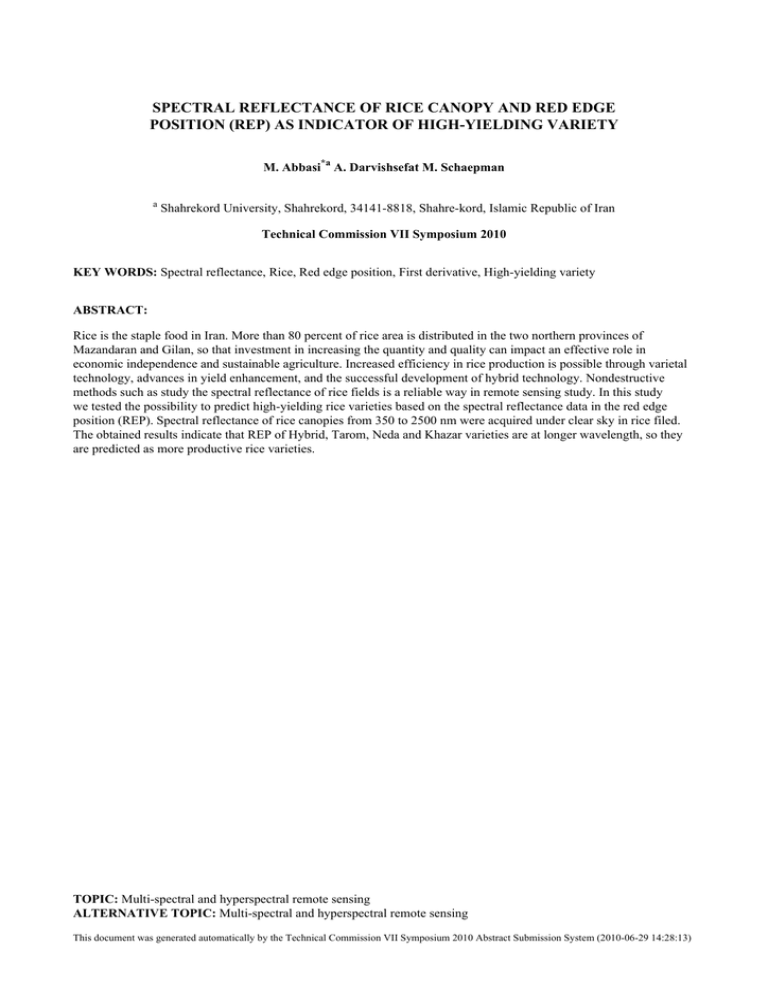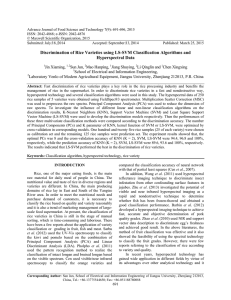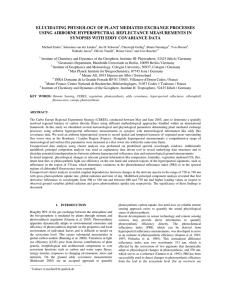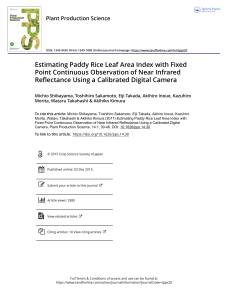SPECTRAL REFLECTANCE OF RICE CANOPY AND RED EDGE
advertisement

SPECTRAL REFLECTANCE OF RICE CANOPY AND RED EDGE POSITION (REP) AS INDICATOR OF HIGH-YIELDING VARIETY M. Abbasi*a A. Darvishsefat M. Schaepman a Shahrekord University, Shahrekord, 34141-8818, Shahre-kord, Islamic Republic of Iran Technical Commission VII Symposium 2010 KEY WORDS: Spectral reflectance, Rice, Red edge position, First derivative, High-yielding variety ABSTRACT: Rice is the staple food in Iran. More than 80 percent of rice area is distributed in the two northern provinces of Mazandaran and Gilan, so that investment in increasing the quantity and quality can impact an effective role in economic independence and sustainable agriculture. Increased efficiency in rice production is possible through varietal technology, advances in yield enhancement, and the successful development of hybrid technology. Nondestructive methods such as study the spectral reflectance of rice fields is a reliable way in remote sensing study. In this study we tested the possibility to predict high-yielding rice varieties based on the spectral reflectance data in the red edge position (REP). Spectral reflectance of rice canopies from 350 to 2500 nm were acquired under clear sky in rice filed. The obtained results indicate that REP of Hybrid, Tarom, Neda and Khazar varieties are at longer wavelength, so they are predicted as more productive rice varieties. TOPIC: Multi-spectral and hyperspectral remote sensing ALTERNATIVE TOPIC: Multi-spectral and hyperspectral remote sensing This document was generated automatically by the Technical Commission VII Symposium 2010 Abstract Submission System (2010-06-29 14:28:13)



